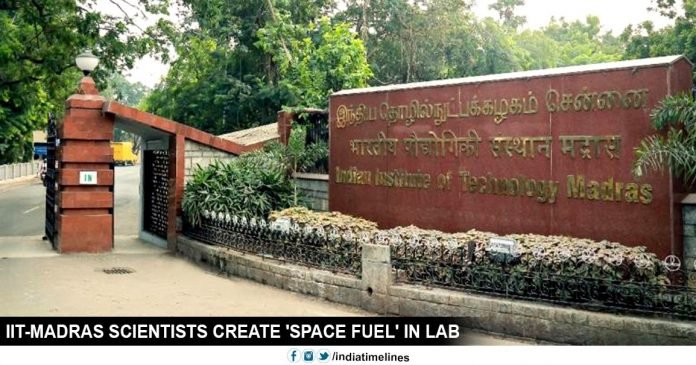
IIT-Madras scientists create ‘space fuel’ in lab- CHENNAI: Scientists of IIT Madras have constructed ‘Space Fuel’ by following the interstellar conditions in the lab, it is a method that can be used to convert atmospheric CO2 to the next generation of energy sources on Earth.
Research published in journal Proceedings of the National Academy of Sciences (PNAS) can help curb greenhouse gases as well as provide a new, lasting source of energy.
Indian Institute of Technology (IIT) Thalpappil Pradeep of Madras told PTI, “We have found that molecules like methane and ammonia may be present in a totally different form in space.” clathrate hydrate contains methane, carbon dioxide molecules, which are trapped in well-defined cages of crystalline solid-forming water molecules.
IIT-Madras scientists create ‘space fuel’ in lab
They are constructed at high pressure and low temperatures at places like sea level, hundreds of meters below sea level. They are also found in glaciers like Siberia.
Such hydrates are considered to be the source of fuels, especially of methane. There are programs for detecting hydrates at sea level in many countries around the world including India.
Researchers at IIT Madras formed such hydrates in a vacuum, which is less than one thousand billion times less than atmospheric pressure, which is called ultra-high vacuum (UHV) and the temperature is close to zero to 263 degrees Celsius. These are the conditions present in deep space
Pradeep said that this discovery of hydrates at extremely low pressure and extremely cold temperatures are very unpredictable and Pradeep said that there can be many implications of the chemistry of such kind of atmospheres. IIT-Madras scientists create ‘space fuel’ in lab.
An experimental UHV was specially created for such studies, in which many spectroscopic investigations were done. Nanometer thin layers of ice and methane were prepared by condensing the mixture of gases on a single crystal made specifically of Ruthenium metal. Ruthenium metal surface was initially cooled to low temperatures. The formation of hydrates was studied by spectroscopy. First of all, when the gases were stored, methane and water ice were solid in spectroscopic characteristics.







































